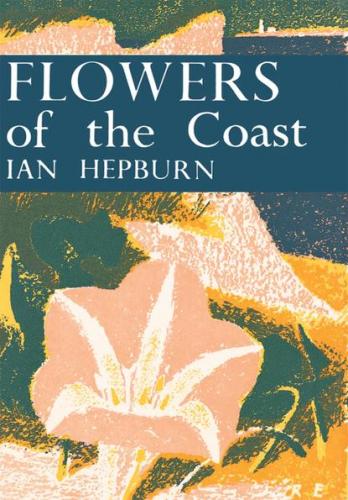Collins New Naturalist Library
24
Flowers of The Coast
Ian Hepburn
JOHN GILMOUR, M.A., V.M.H.
SIR JULIAN HUXLEY, M.A., D.Sc., F.R.S.
MARGARET DAVIES, M.A., Ph.D.
KENNETH MELLANBY, C.B.E., Sc.D.
PHOTOGRAPHIC EDITOR:
ERIC HOSKING, F.R.P.S.
The aim of this series is to interest the general reader in the wild life of Britain by recapturing the inquiring spirit of the old naturalists. The Editors believe that the natural pride of the British public in the native fauna and flora, to which must be added concern for their conservation, is best fostered by maintaining a high standard of accuracy combined with clarity of exposition in presenting the results of modern scientific research. The plants and animals are described in relation to their homes and habitats and are portrayed in the full beauty of their natural colours, by the latest methods of colour photography and reproduction.
toPHYLLISwho loves the sea but is sometimes uncertain of her botany
Table of Contents
CHAPTER 1 INTRODUCTORY
CHAPTER 2 THE PHYSIOGRAPHICAL BACKGROUND
CHAPTER 3 SOME ECOLOGICAL CONSIDERATIONS
CHAPTER 4 FORM AND HABIT OF COASTAL PLANTS
CHAPTER 5 SALT-MARSH VEGETATION
CHAPTER 6 STRAND AND FORESHORE VEGETATION
CHAPTER 7 SAND-DUNE VEGETATION
CHAPTER 8 SHINGLE BEACH VEGETATION
CHAPTER 9 VEGETATION OF SPRAY-WASHED ROCKS AND CLIFFS
CHAPTER 10 VEGETATION OF CLIFF-TOPS
CHAPTER 11 VEGETATION OF BRACKISH WATER
CHAPTER 12 THE FLOWERS OF THE COAST
IN ANY civilised country the two types of habitat least altered by man or his domesticated animals are the mountains and the coast. Mountains and Moorlands have already been dealt with in this series by Professor W. H. Pearsall, and, in the present volume, Mr. Ian Hepburn tackles the wild flowers of our coast. Despite the modest disclaimer in his Preface, Mr. Hepburn is particularly well qualified for the task. He is Second Master at Oundle School and one of the leading amateur plant ecologists in the country. He has served on the Council of the British Ecological Society for many years and has published the results of a number of his ecological investigations, including work on the plants of the Northamptonshire limestone and of sea-cliffs. As one would expect, his approach to coastal vegetation is primarily an ecological one, but he has by no means neglected the beauty or botanical interest of the plants themselves, and we feel that he gives in his book a balanced and vivid account of a fascinating subject.
Coastal vegetation has always had a particular attraction for field botanists, and the reasons are not difficult to understand. First, in no other habitat does the flora change so completely in the course of a short walk; one minute there is sand filling our shoes, and marram-grass pricking our legs, and the next a level carpet of sea-lavender lies around us, the dunes are left behind and a grey cliff, with samphire and tree-mallow, lures us farther on. In Britain, probably more than any other country, is this ever-varying quality of the coastline manifest; and the maritime vegetation shows a corresponding richness. Secondly, many of the plants themselves are of great beauty and, in some cases, rarity. The lovely glaucous leaves of the oyster-plant setting off its blue and pink flowers against a Scottish shingle bank, or the autumn squill sprinkling a dry September cliff-turf in Cornwall, spring to the mind—and there are many others. Thirdly, for an ecologist, the coast has a special interest, as nowhere are the succession of vegetation and its dependence on a varying environment so evident, and nowhere have they been more thoroughly investigated. As Mr. Hepburn shows, in an acre or two of salt-marsh are displayed, for those who have eyes to see, most of the more important principles of stable vegetational succession, while on a newly fallen section of cliff, the gradual colonisation of virgin ground can be studied year after year. Lastly, if the environment for the plants is unrivalled in its variety, it is no less so for the humans who study them; a botanist who chooses the British coasts as his hunting ground can enjoy, with a clear conscience, a succession of seaside holidays on what is perhaps the finest coastline in the world.
THE EDITORS
IT WAS with considerable diffidence that I, a mere amateur, accepted the invitation of the Editors to write
